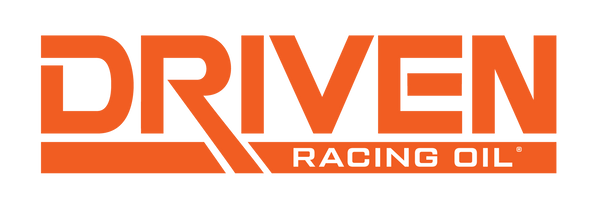When it comes to high-performance engines, the oil you use can mean the difference between peak performance and catastrophic failure. Whether you're hitting the track or pushing your engine to the limit, using the right oil is non-negotiable.
Unlike street oils, which are designed for daily driving and emissions regulations, racing oils are purpose-built to handle the extreme heat, RPMs, and stress of competition engines. And with Driven Racing Oil, you get a no-additives-required solution—just pick the right Driven product and go.
Let’s break down the key differences between street oil and racing oil—and why Driven Racing Oil is the clear choice for serious performance.
1. Street Oil Relies on Additives—Driven Racing Oil Doesn't
Many street oils depend on additives to maintain performance, but if your oil needs additives, you’ve got the wrong oil.
- Street oils are designed for long drain intervals and emissions compliance, which limits their ability to handle extreme racing conditions.
- Driven Racing Oil is pre-engineered for high-performance applications—no extra additives required. Just choose the right Driven product, and you’re ready for competition.
- Racing oils like Driven GP-1 feature high ZDDP (zinc dialkyldithiophosphate) levels, providing superior anti-wear protection under high-stress conditions.
2. Viscosity Breakdown – Why Street Oils Can’t Handle Racing Conditions
Viscosity is one of the biggest differences between street oil and racing oil.
- Street oils are formulated for fuel economy and cold starts, making them more prone to thinning under extreme heat and stress.
- Driven DT50 and FR Series full synthetics resist foaming and maintain viscosity under extreme shearing forces, preventing oil film breakdown at high RPMs.
- Driven GP-1 features strong polarity (surface cling), ensuring better lubrication and reducing wear, especially when using alcohol-based fuels, which can dissolve weaker oils.
3. Shear Stability – The Hidden Threat to Street Oils in High-Performance Engines
When engines reach high RPMs, the oil is constantly being sheared by moving parts. If the oil thins too much, metal-on-metal contact can cause severe wear or even engine failure.
- Street oils are not designed to handle continuous high shear forces, which can lead to foaming, viscosity loss, and poor lubrication.
- Driven DT50 and FR Series full synthetics provide high shear stability, meaning they don’t thin out as easily under stress, protecting your engine when it needs it most.
4. Racing Oil is Designed for Specific Applications – Street Oil is One-Size-Fits-All
A major difference between racing oil and street oil is that racing oils are precision-engineered for specific applications, whereas street oils are made for general consumer vehicles.
- Street oils prioritize fuel economy, emissions compliance, and long drain intervals—none of which help in a high-performance engine.
- Driven Racing Oil is tailored for performance, ensuring you get the right oil for your exact application.
- Whether you need the high-cling benefits of GP-1 or the shear-resistant protection of DT50 and FR Series full synthetics, Driven has the right oil—no additives needed.
Final Verdict: Racing Engines Need Racing Oil
If you're pushing your engine to the limit, street oil just won’t cut it. Racing engines require an oil that can withstand extreme stress, protect critical components, and maintain performance under high RPMs—and that’s exactly what Driven Racing Oil delivers.
With high-ZDDP protection, advanced viscosity stability, and superior shear resistance, Driven Racing Oil gives you the performance and protection your engine demands—without the need for extra additives.
Protect your engine. Maximize your performance. Choose Driven.

